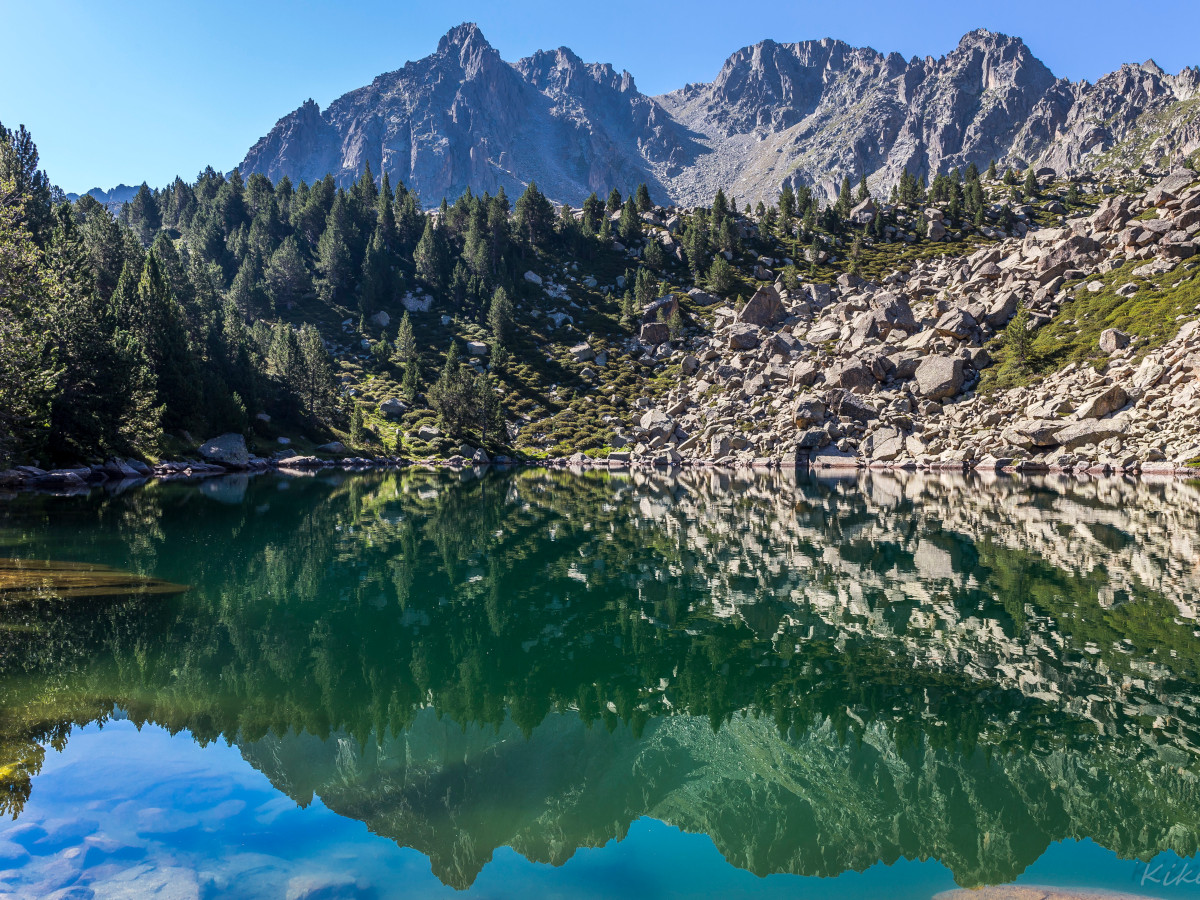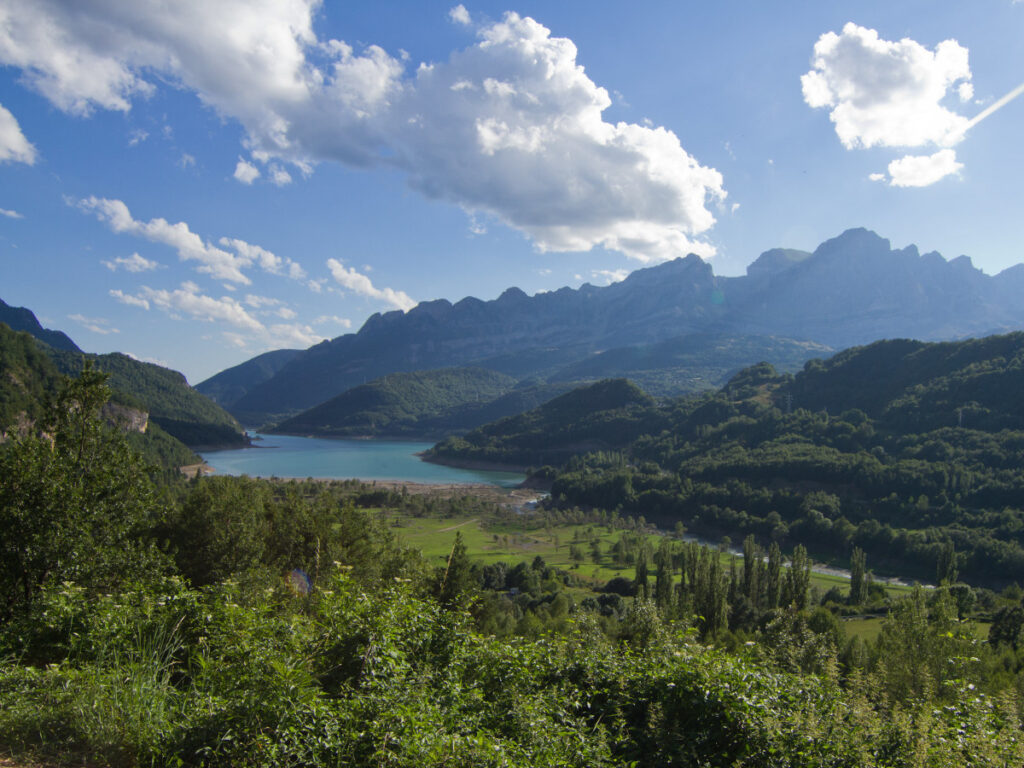El apasionante desafío de cruzar los Pirineos

La cadena montañosa de los Pirineos es uno de los grandes reclamos para los aficionados del trekking y la naturaleza, ya que alberga infinidad de rutas en un enclave geográfico inmejorable. Su posición como límite entre Francia y España le ha convertido en un lugar recurrente de paso desde hace siglos, algo que con el paso del tiempo ha llamado la atención de una gran multitud de aventureros.
De hecho, cruzar los 430 km de los Pirineos se convierte en un desafío apasionante para los senderistas más experimentados. El recorrido es muy duro y requiere preparación previa, pero también ofrece experiencias que son imposibles de encontrar en ningún otro punto del continente europeo.
La posibilidad de cruzar desde el mar Mediterráneo hasta el mar Cantábrico, al mismo tiempo que conocemos las diferencias culturales de regiones francesas, españolas o andorranas supone un aliciente que cada vez llama más la atención. El turismo deportivo se ha hecho eco de este tipo de viajes, que suelen completarse a tramos y en varias ocasiones en un proceso de experiencia similar al del Camino de Santiago.
Sin embargo, es importante recalcar que estas rutas son más exigentes y requieren una mayor preparación. Por ejemplo, una leyenda del trekking de alta montaña como Kilian Jornet ha logrado coronar recientemente 177 cimas de los Pirineos en apenas ocho días (para su peculiar travesía pirenaica enlazando cimas de tresmiles), pero estos números no están al alcance de nadie más.
Su condición de deportista de élite y toda una vida dedicada a este tipo de actividades avalan su gesta, que la convierte en uno de los logros más impresionantes de su carrera. Por supuesto, lo más recomendable es realizar viajes de menor intensidad y con más días para disfrutar del recorrido, aunque si el tiempo del que disponemos es reducido siempre se puede “trocear” la ruta para disfrutarla en distintos periodos de tiempo.
¿Qué nos vamos a encontrar en los Pirineos?
La cordillera pirenaica es sinónimo de naturaleza, algo que se refleja en sus parques naturales y nacionales, pero también de otros factores como cultura, gastronomía o deporte. Los cambios de paisaje son notables en función de la altitud, pero también dependen estrechamente de la región en la que nos encontremos.
El pirineo catalán, el pirineo de Huesca, el pirineo navarro, la zona andorrana o las regiones francesas se diferencian entre sí. Además, no tienen nada que ver las cumbres, las piscinas naturales, los lagos de alta montaña o un sinfín de accidentes geográficos que solo se pueden disfrutar mediante el esfuerzo de una buena ruta.
¿Cómo podemos llegar a los Pirineos?
El aeropuerto internacional Josep Tarradellas Barcelona-El Prat es el más cercano a los Pirineos del lado español, en su vertiente más oriental, sobre todo si tenemos en cuenta que acoge vuelos internacionales. Su conexión entre la Ciudad Condal y 170 destinos de todo el mundo nos permite seleccionar con mayor precisión fechas, horarios o posibles conexiones futuras hacia otros enclaves.
Sin embargo, los billetes de avión a Barcelona no nos limitan únicamente a la provincia homónima, ya que tenemos el Aeropuerto Internacional de Girona-Costa Brava más al norte. Este aeropuerto recibe vuelos low cost y tiene menor afluencia, pero nos sitúa algo más cerca de la cordillera. A partir de ese punto, la conexión es cómoda en tren, autobús o coche.

¿Dónde dormir en los Pirineos?
Este tipo de rutas centradas en el senderismo invitan siempre a pernoctar en vez de acampar, ya que la diferencia es abismal en cuanto a regulación. La acampada libre está prohibida por norma general en España, pero pasar la noche y recoger al amanecer para continuar nuestra ruta es la opción más viable.
Aun así, a lo largo de estos 430 km encontramos multitud de municipios con albergues, hostales y hoteles, que se adecúan en precio a cualquier bolsillo. Lo ideal a la hora de realizar rutas largas es compaginar la pernocta en refugios de montaña con este tipo de alojamientos, que nos aportan más descanso y la posibilidad de combinar el encanto natural de los pirineos con buena gastronomía o cultura autóctona.
La zona no se ha masificado mucho a nivel turístico, sobre todo si salimos de los lugares más «mediáticos», pero depende mucho de las temporadas y las estaciones. Lo más recomendable es viajar en primavera u otoño si queremos hacer caminatas en la zona más oriental, o disfrutar del Pirineo occidental más salvaje, por las condiciones climáticas. Para el Pirineo central deberemos esperar al verano. Al mismo tiempo debemos consultar la normativa de los distintos parques y la información que nos proporcionan para elaborar nuestra ruta.
La bicicleta puede ser una gran aliada
Finalmente, debemos detenernos en la bicicleta de montaña como una gran aliada para realizar este tipo de recorridos, sobre todo si pretendemos recorrer largas distancias en un tiempo limitado, y si eres fan de la bicicleta de montaña. Los caminos suelen estar habilitados para este tipo de vehículos y existen incluso pruebas deportivas basadas en este concepto. La transpirenaica en btt tiene cada vez más adeptos.
El abanico de posibilidades es muy amplio y puede adaptarse a las necesidades de cada aficionado, siempre que seamos conscientes del esfuerzo físico que requieren este tipo de rutas. Los Pirineos se encargan de ofrecer naturaleza y gastronomía, pero debemos ser muy conscientes del estilo de recorrido que deseamos afrontar.
Los 430 km de cordillera pirenaica se pueden convertir en un tramo infinito, al que acudir para disfrutar de numerosas actividades. El trekking es el más común y cada vez tiene una mayor acogida por parte de los amantes de este deporte, pero también se puede apostar por viajes más relacionados con el descanso y la desconexión.
Las piscinas naturales, los lagos de alta montaña o pueblos de distintas regiones nos permiten combinar estas rutas con otros alicientes. Esto convierte a los Pirineos en un destino muy bien comunicado, asequible económicamente y amplio en su oferta de ocio.
- Foto portada: «Estany Moreno, Andorra» (CC BY-SA 2.0) by kike.matas
- Foto artículo: «Pirineos_MG_0524» (CC BY 2.0) by emanuela piazza
Fastpacking no es ir más rápido. Es ir más ligero.
Si vienes del trekking clásico, este es el siguiente paso: aprender a moverte con menos peso,
más fluido y disfrutando más de cada kilómetro.
Únete al canal y empieza a descubrir cómo se siente la ligereza.
